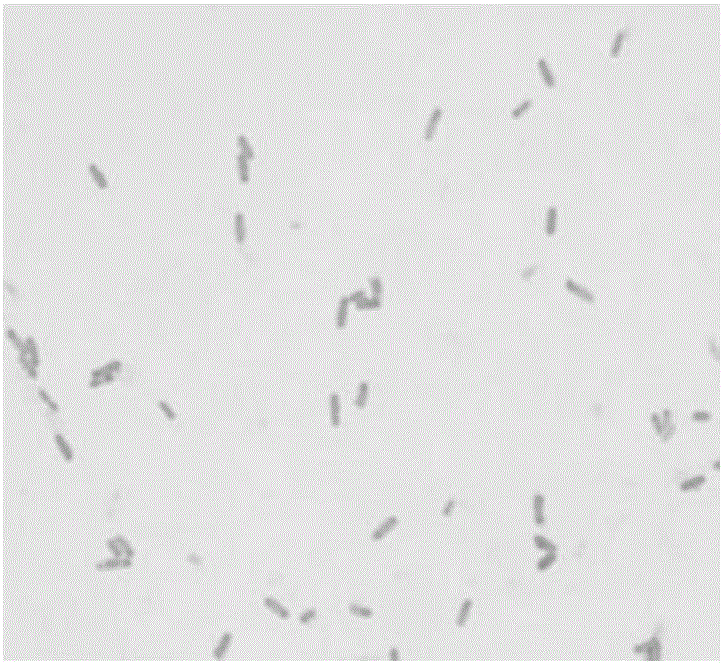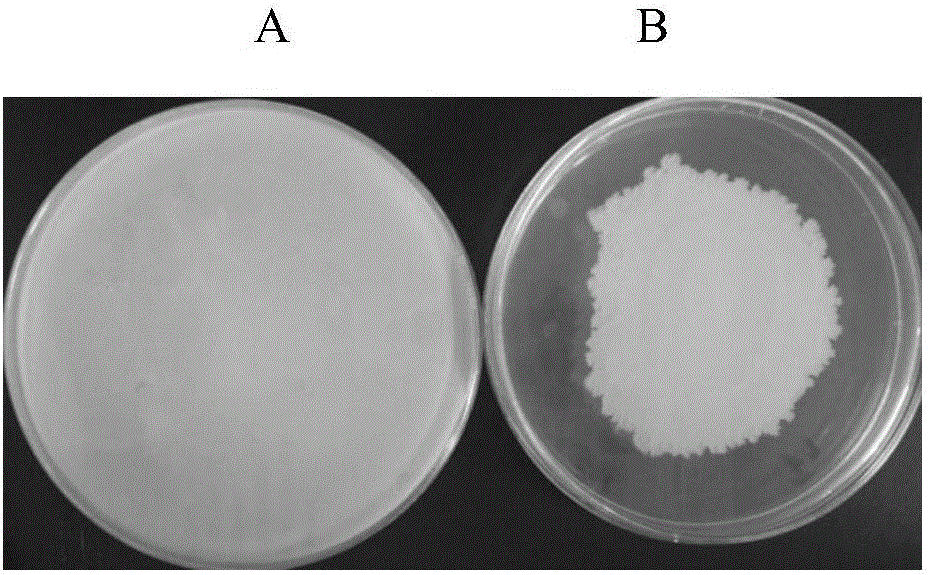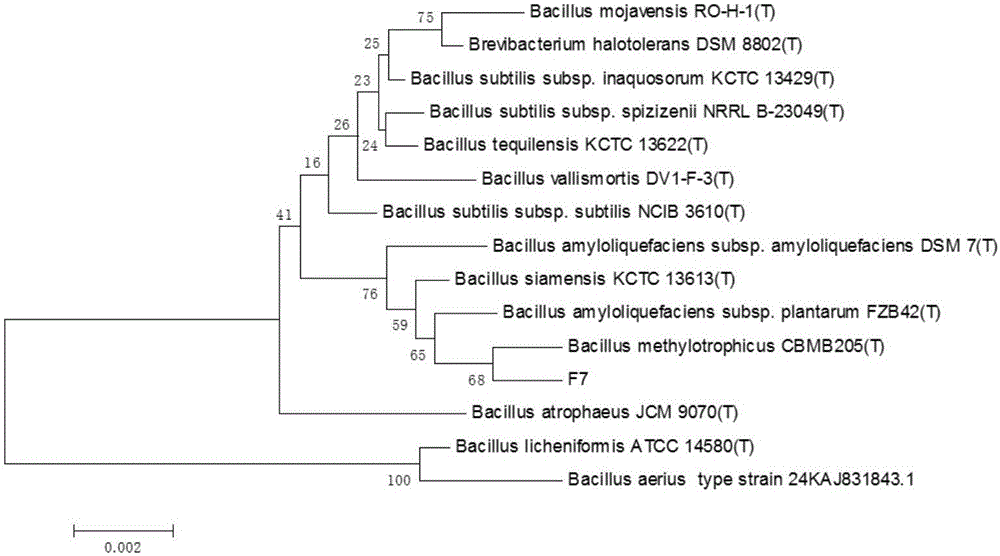Bacillus methylotrophicus F7 and application thereof
A methylotrophic and Bacillus technology, applied in the direction of application, bacteria, and fungicides, can solve problems such as difficult to achieve ideal effects, and achieve high-efficiency biological control capabilities and significant biological control effects
- Summary
- Abstract
- Description
- Claims
- Application Information
AI Technical Summary
Problems solved by technology
Method used
Image
Examples
Embodiment 1
[0046] Example 1 Screening and Purification of Bacterial Strains
[0047] (1) Primary screening
[0048] Beef extract-peptone medium: 10g bacteriological peptone, 3g beef extract, 5g sodium chloride, 18g agar, 1000mL distilled water, adjust the pH to 7.0-7.2.
[0049] Pseudomonas solanacearum (Ralstonia Solanacearum) was used as the pathogen indicator bacteria to screen antagonistic strains. Streak Pseudomonas solanacearum on a TTC plate, culture it in a constant temperature incubator at 30°C for 48 hours, and then observe it, and pick the strains with strong pathogenicity and cultivate them for later use. Take the culture solution of Pseudomonas solanacearum cultured at 30°C for 24 hours, use a pipette to draw 200 μL of the bacteria solution into the sterile plate, pour it into the plate containing the bacteria solution, and cool it to about 45°C About 20mL of NA medium per plate was placed in a horizontal position and the plate was quickly rotated to mix the medium and the...
Embodiment 2
[0055] Example 2 Characterization
[0056] (1) The morphological characteristics of the bacteria are Gram-positive bacteria with spores. The bacteria are rod-shaped, motile and aerobic. Spore staining photos of bacteria see figure 1 .
[0057] (2) The morphological characteristics of the colony. The colonies formed after culturing on the beef extract peptone medium for 24 hours are round or irregular. After 48 hours, the colonies are all round, milky white, about 1-2 mm in diameter, with irregular edges and moist . F7 bacteria have swimming and wriggling properties, and spread to the entire plate after being cultured overnight on LB medium containing 0.3% agar, indicating that F7 bacteria have swimming properties (swim), and overnight culture on LB medium containing 0.7% agar has a certain Swimming (swam), see figure 2 .
[0058] (3) Growth characteristics, cultured for 18 hours under conditions of 5g of yeast extract powder, 10g of peptone, 10g of sodium chloride, and ...
Embodiment 3
[0065] Example 3 Experiment of siderophore production by F7 bacteria
[0066] Transfer the strain to the LB plate and culture it for 24-48 hours, use the point inoculation method, use a sterilized toothpick to inoculate the strain on the CAS solid detection plate, spot 3 replicates, culture at 28°C for 3 days, and test the cultured CAS On the plate, due to the iron ions chelated by EDTA in the siderophilic competition medium, the medium changes from blue to yellow, thereby judging whether siderophores are produced. Test results such as Figure 4 As shown in , an obvious yellow halo appeared around the strain, indicating that the strain produced siderophore.
PUM
| Property | Measurement | Unit |
|---|---|---|
| diameter | aaaaa | aaaaa |
| diameter | aaaaa | aaaaa |
| diameter | aaaaa | aaaaa |
Abstract
Description
Claims
Application Information
 Login to View More
Login to View More - R&D
- Intellectual Property
- Life Sciences
- Materials
- Tech Scout
- Unparalleled Data Quality
- Higher Quality Content
- 60% Fewer Hallucinations
Browse by: Latest US Patents, China's latest patents, Technical Efficacy Thesaurus, Application Domain, Technology Topic, Popular Technical Reports.
© 2025 PatSnap. All rights reserved.Legal|Privacy policy|Modern Slavery Act Transparency Statement|Sitemap|About US| Contact US: help@patsnap.com



